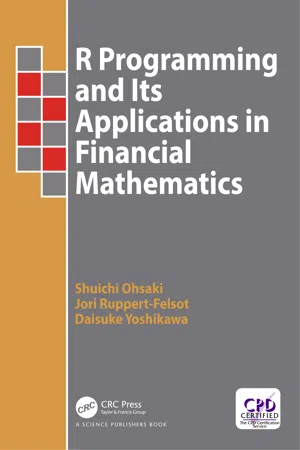
R Programming and Its Applications in Financial Mathematics
- 248 pages
- English
- ePUB (mobile friendly)
- Available on iOS & Android
R Programming and Its Applications in Financial Mathematics
About This Book
This book provides an introduction to R programming and a summary of financial mathematics.
It is not always easy for graduate students to grasp an overview of the theory of finance in an abstract form. For newcomers to the finance industry, it is not always obvious how to apply the abstract theory to the real financial data they encounter. Introducing finance theory alongside numerical applications makes it easier to grasp the subject.
Popular programming languages like C++, which are used in many financial applications are meant for general-purpose requirements. They are good for implementing large-scale distributed systems for simultaneously valuing many financial contracts, but they are not as suitable for small-scale ad-hoc analysis or exploration of financial data. The R programming language overcomes this problem. R can be used for numerical applications including statistical analysis, time series analysis, numerical methods for pricing financial contracts, etc.
This book provides an overview of financial mathematics with numerous examples numerically illustrated using the R programming language.
Frequently asked questions
CONTENTS
Table of contents
- Cover
- Halftitle Page
- Title Page
- Copyright
- Table of Contents